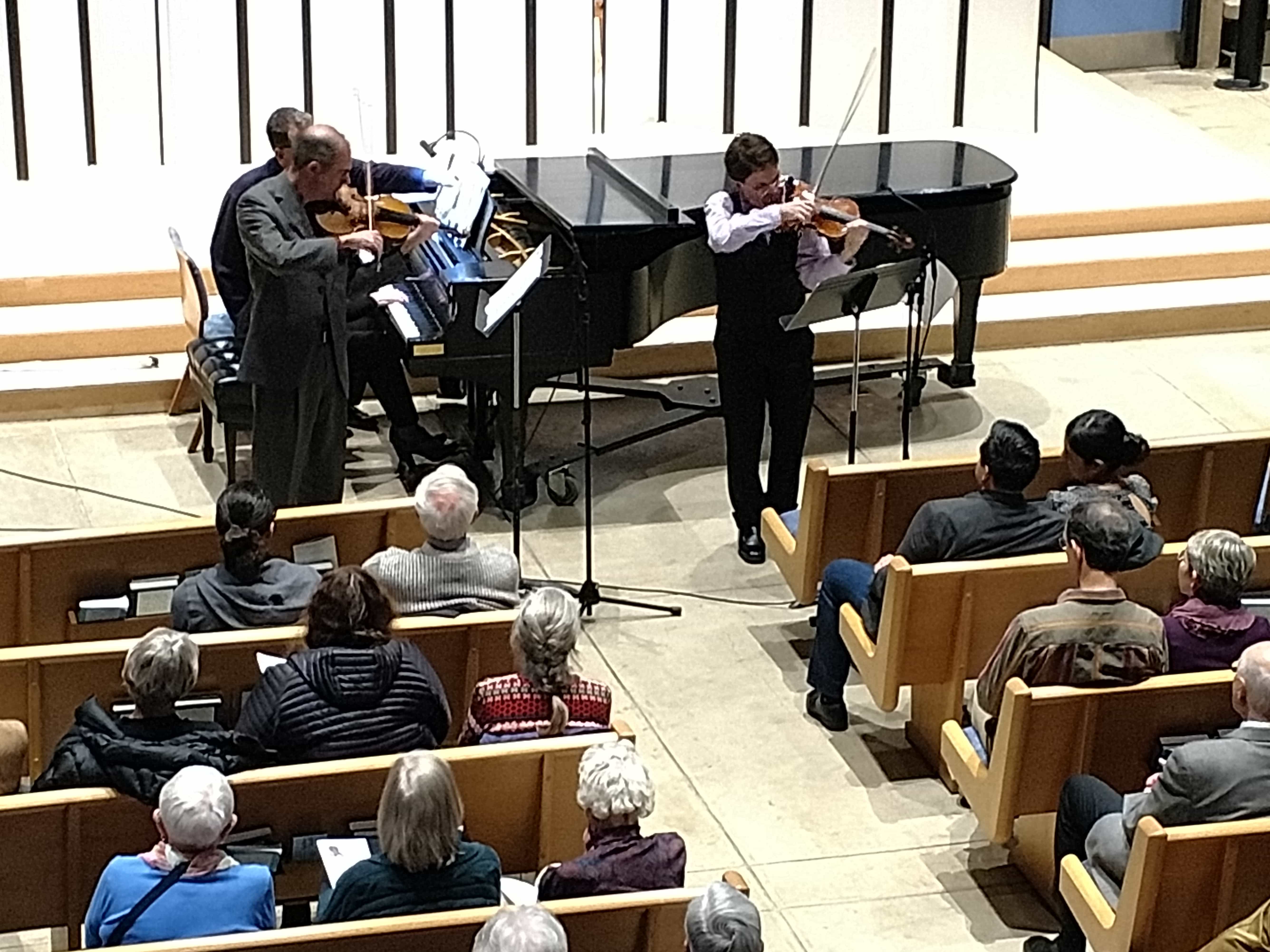The Romantic Violin for Two by the National Chamber Ensemble was a tour of the different types of love, the sorrows and joys love brings, and most importantly the power it possesses to move the heart. While the pieces of the evening were not romantic in the traditional or glamorized way, they clearly reflected the ensemble’s feelings about the music that they were playing, the memories it evoked, and the time it allowed us as audience members to share with our loved ones.

Starting the evening with a composer who needs no introduction, Concertante for Two Violins by Wolfgang Amadeus Mozart was layered with the skillful and unique styles of the featured musicians: James Stern and Leonid Sushansky on violin and Kathryn Brake on piano. The first movement, Alegro con spirito, danced as their fingers flew, but it was really the third movement that locked to magical effect. Where the earlier two movements playfully bantered back and forth, Allegro molto produced a fullness of sound, complex and satisfying.
Next was a pairing of movements by Viennese composer Fritz Kreisler, known for his short and sprightly compositions. Liebeslied (Love’s sorrow) and Liebesfreud (Love’s joy) provided delightful contrast both to one another and in how they diverged from the expected interpretations of sorrow and joy.
Liebeslied (Love’s sorrow) played by Stern and Brake reminded me of the heartache of first love. Panging and sharp, but also young and naïve. Stern’s phrasing was light and lilting as he plumbed the depths of Kreisler’s sorrow. Liebesfreud (Love’s joy) on the other hand was solid and sturdy. With a robust and commanding tone, Sushansky’s interpretation of Kreisler’s Liebesfreud carried an unexpected and mature weight. Like a full-throated/stringed declaration of love, his powerful strokes danced.
The most traditionally romantic piece came after intermission in Méditation from Thaïs by Jules Massenet. Its sweeping melody and achingly sweet crescendos told the story of a courtesan’s love for a man whose path would cause her to abandon her own. Performed by Stern and Brake, this reflection was rich and tumbling. Brake’s playing in this piece in particular wove beautifully with the soaring vibrato of the violin, much like the lovers who had inspired it.

The final piece of the evening was Suite for Two Violins and Piano in G Minor, Op. 71 by Moritz Moszkowski. A playful take on practice recitations for a concert audience, this suite was lively, cheeky, and moody all at the same time. The first movement, Allegro Energico, was as stormy as Stern’s introduction said it would be, with brash strokes racing up and down the octaves. Allegro moderato and Lento assai, which followed, were coy and babbled from Sushansky to Stern in a perfect cannon.
But it was the last movement where the fun really started. Akin to a schmaltzy Broadway love song and dance, Molto vivace was boisterous and lively. Sushansky’s darker, weighted bow was particularly well suited to the ruckus, as was the expressive build of the dramatic piano part at Brake’s hands.
Between each piece, the musicians stopped to provide context for what was to be performed. Whether a preview of what to listen for or historical framing, this was especially helpful to anyone less familiar with classical music in the audience. Small touches that went a long way to making this beautiful art form more accessible.
Reoccurring throughout was also the idea that these chamber pieces would have been played for small groups, for composers themselves, or for fellow musicians, and not for a large public audience. Designed for the intimacy of friends, this collection of romance in all its forms connected the hearts of all who shared in the experience.
Running Time: 90 minutes, including one 15-minute intermission.
The Romantic Violin for Two by the National Chamber Ensemble played for one night only on February 10, 2018, at the Unitarian Universalist Church of Arlington – 4444 Arlington Boulevard, Arlington, VA. For future performances and information check out the National Chamber Ensemble’s calendar online.




